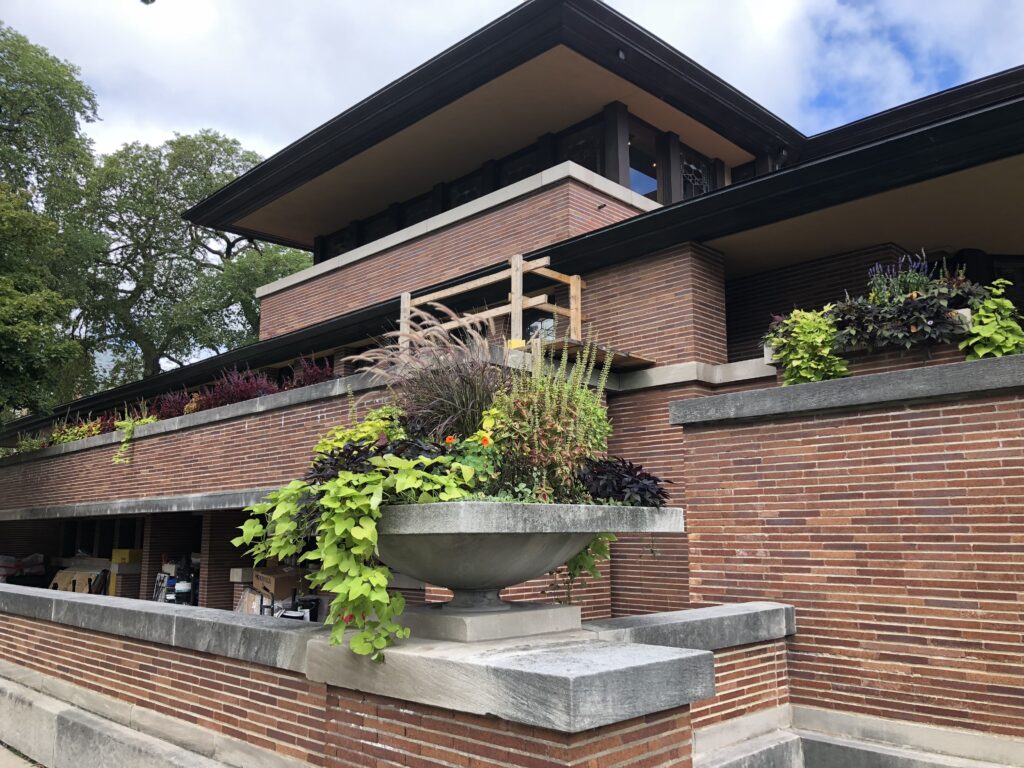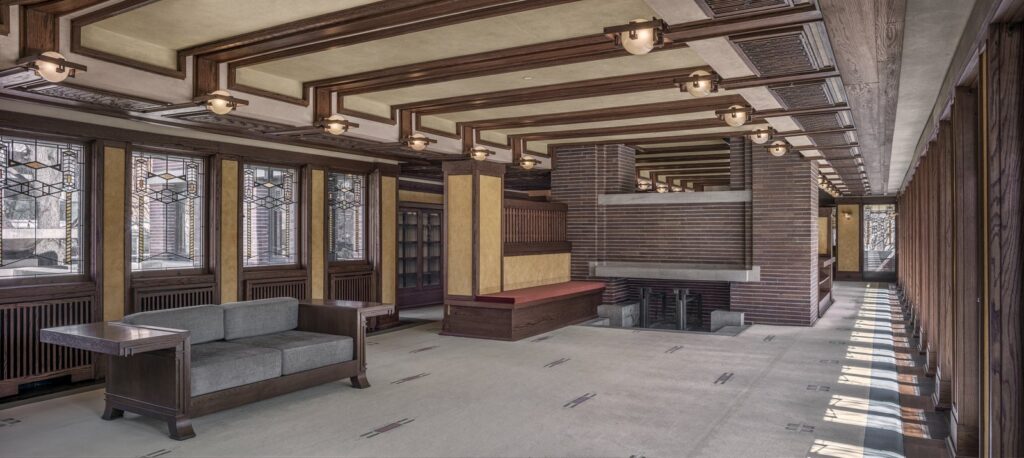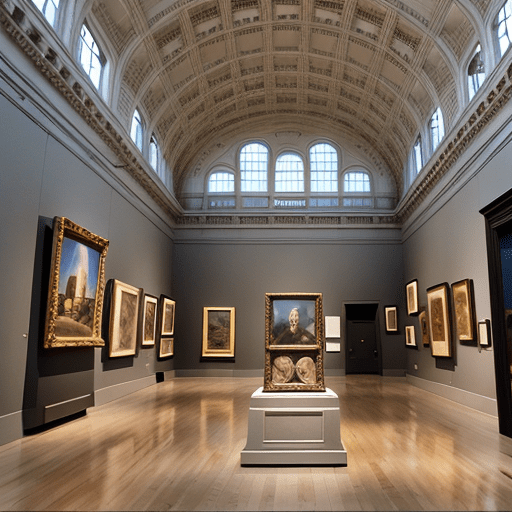The Frederick C. Robie House: A Pioneering Piece of American Architecture
The Frederick C. Robie House, located in Chicago, is one of the most significant and iconic structures in American architectural history. Designed by the legendary Frank Lloyd Wright, the Robie House stands as a testament to his revolutionary Prairie School style, which has left an indelible mark on architectural designs worldwide.
The Journey Begins
The inception of the Robie House dates back to 1908, when a young and ambitious Frederick C. Robie commissioned Wright to design a unique, single-family residence. Robie, an assistant manager at the Excelsior Supply Company, was attracted by Wright’s innovative design approach. His vision aligned with Wright’s goal of creating architecture that was in harmony with humanity and its environment, a philosophy that was embodied in the Prairie style.
The Design and Construction Phase
The Robie House’s design was conceived in Wright’s Oak Park studio between 1908 and 1909. The construction commenced in 1909, carried out by the Chicago-based H.B. Barnard Co. Although Wright was not directly involved in supervising the construction beyond the early stages, the end product flawlessly embodied his vision.
The total cost of the Robie House was approximately $58,500, which included $13,500 for the land, $35,000 for the design and construction, and $10,000 for furnishings. The investment was significant for the time, but it resulted in a residence that was both a family home and a work of art.
The Architectural Style: Wright’s Prairie School
The design of the Robie House is a classic embodiment of Wright’s Prairie School style. This architectural style is characterized by horizontal lines and flat or hipped roofs with broad overhanging eaves, often integrating solid construction, craftsmanship, and discipline in the use of ornament. It represented a shift from traditional residential architecture and was a complete departure from the European-influenced designs that dominated American architecture at the time.
The Robie House showcases the Prairie style’s key elements, including the innovative use of interior and exterior spaces, the manipulation of light, and the overall integration with nature. These elements were all part of Wright’s desire to create a distinctly American style of architecture that was in harmony with the country’s midwestern landscape.

The Exterior: An Architectural Marvel
The exterior of the Robie House is a showcase of Wright’s mastery of design. The structure is dominated by horizontal lines and planes, creating an impression of broad, flat surfaces. The building’s exterior walls are constructed of Roman brick, with the horizontal joints emphasized and the vertical ones downplayed, further accentuating the horizontal theme.
The house’s dramatic cantilevered rooflines, a hallmark of Wright’s designs, extend over the exterior spaces. The roof eaves, continuous bands of art-glass windows, and the use of Roman brick emphasize the horizontal, which Wright associated with the American prairie.
The Interior: A Fusion of Function and Aesthetics

The interior of the Robie House is as impressive as its exterior. Wright adopted an open floor plan, which was a significant departure from the compartmentalized rooms of traditional Victorian architecture. The main living spaces, including the dining room and living room, flow seamlessly into one another, creating a sense of openness and freedom.
The interior also features many of Wright’s innovative design elements, such as built-in furniture, extensive use of art-glass windows, and carefully planned lighting. The entrance hall is dark and low-ceilinged, leading to a bright, open second-floor living and dining room area. The contrast between the dark entrance hall and the light-filled living and dining rooms creates a sense of drama and anticipation.
The Significance of the Robie House
The Robie House is not only an architectural masterpiece, but it also represents a significant milestone in the evolution of American architecture. It is widely regarded as the greatest example of the Prairie School style and has been called “the cornerstone of modern architecture” by the American Institute of Architects.
The house was designated a National Historic Landmark in 1963 and was listed on the very first National Register of Historic Places in 1966. In 2019, along with seven other Wright-designed buildings, the Robie House was designated a UNESCO World Heritage site.
Preservation of the Robie House
Despite its historical and architectural significance, the Robie House faced several threats of demolition in its early years. The most serious threat came in 1957, when the Chicago Theological Seminary, which had acquired the building, announced plans to demolish it. However, due to a public outcry and the intervention of Wright himself, the house was saved.
Since then, the Robie House has undergone extensive restoration efforts to preserve its original appearance. These restoration works, guided by historical research and physical investigation, have allowed future generations to experience Wright’s architectural genius.
The Legacy Lives On
Today, the Robie House stands as a testament to Wright’s architectural vision and his profound influence on the course of American architecture. It continues to inspire architects and designers worldwide. Whether it’s the unique design, the innovative use of space, or the seamless integration of the building with its environment, the Robie House is a shining example of Wright’s enduring architectural legacy.
The Robie House in Popular Culture
The Robie House has also made its mark on popular culture. It was featured in a 2011 Lego set, becoming the third Wright building to be immortalized in plastic bricks. It has also been the subject of documentaries and books, further cementing its place as an iconic piece of American architecture.
The Frederick C. Robie House is more than just a building. It is a symbol of a revolution in architectural thinking, a masterpiece of design, and a beacon of American architectural innovation. It stands as a testament to Frank Lloyd Wright’s genius and his vision of creating a uniquely American style of architecture. Today, the Robie House is not just admired as a historical monument, but it continues to inspire and influence architects all over the world.



